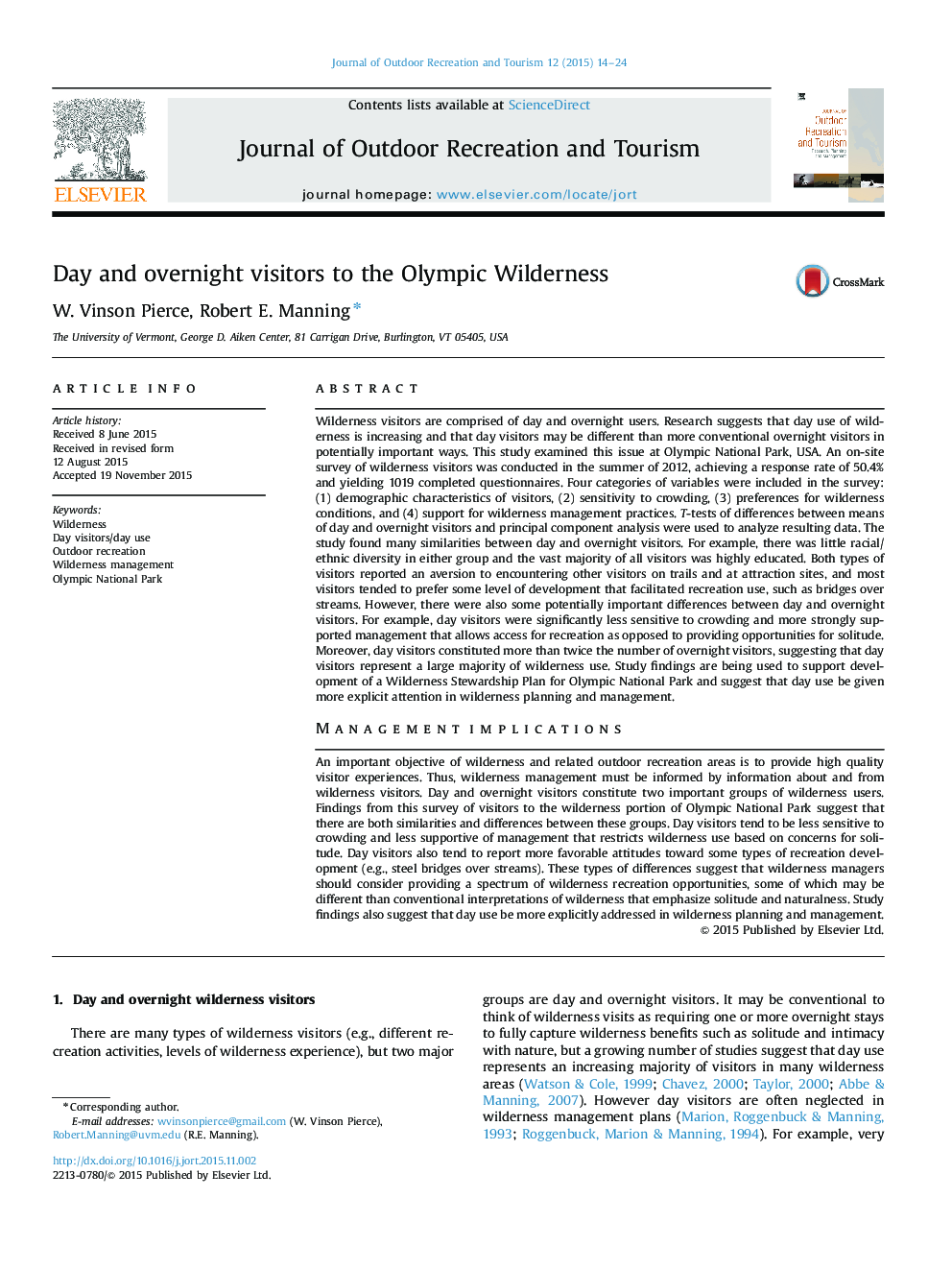| کد مقاله | کد نشریه | سال انتشار | مقاله انگلیسی | نسخه تمام متن |
|---|---|---|---|---|
| 92382 | 159953 | 2015 | 11 صفحه PDF | دانلود رایگان |
Wilderness visitors are comprised of day and overnight users. Research suggests that day use of wilderness is increasing and that day visitors may be different than more conventional overnight visitors in potentially important ways. This study examined this issue at Olympic National Park, USA. An on-site survey of wilderness visitors was conducted in the summer of 2012, achieving a response rate of 50.4% and yielding 1019 completed questionnaires. Four categories of variables were included in the survey: (1) demographic characteristics of visitors, (2) sensitivity to crowding, (3) preferences for wilderness conditions, and (4) support for wilderness management practices. T-tests of differences between means of day and overnight visitors and principal component analysis were used to analyze resulting data. The study found many similarities between day and overnight visitors. For example, there was little racial/ethnic diversity in either group and the vast majority of all visitors was highly educated. Both types of visitors reported an aversion to encountering other visitors on trails and at attraction sites, and most visitors tended to prefer some level of development that facilitated recreation use, such as bridges over streams. However, there were also some potentially important differences between day and overnight visitors. For example, day visitors were significantly less sensitive to crowding and more strongly supported management that allows access for recreation as opposed to providing opportunities for solitude. Moreover, day visitors constituted more than twice the number of overnight visitors, suggesting that day visitors represent a large majority of wilderness use. Study findings are being used to support development of a Wilderness Stewardship Plan for Olympic National Park and suggest that day use be given more explicit attention in wilderness planning and management.Management implicationsAn important objective of wilderness and related outdoor recreation areas is to provide high quality visitor experiences. Thus, wilderness management must be informed by information about and from wilderness visitors. Day and overnight visitors constitute two important groups of wilderness users. Findings from this survey of visitors to the wilderness portion of Olympic National Park suggest that there are both similarities and differences between these groups. Day visitors tend to be less sensitive to crowding and less supportive of management that restricts wilderness use based on concerns for solitude. Day visitors also tend to report more favorable attitudes toward some types of recreation development (e.g., steel bridges over streams). These types of differences suggest that wilderness managers should consider providing a spectrum of wilderness recreation opportunities, some of which may be different than conventional interpretations of wilderness that emphasize solitude and naturalness. Study findings also suggest that day use be more explicitly addressed in wilderness planning and management.
Journal: Journal of Outdoor Recreation and Tourism - Volume 12, December 2015, Pages 14–24
